For almost 200 years, western Germany was the industrial center of the country, with the Ruhr Valley, located in the state of North Rhine-Westphalia in Essen, being one of the most important industrial regions in the world with its more than 1,150 years of history.
Zeche Zollverein was the largest coal mine in the world, and is considered a symbol of industrial development not only in Essen and its surroundings, but in Germany itself.
This coal mine remained in operation for 135 years, having been deactivated in 1986. The shaft tower, one of the most important in the complex, was built in 1932 and influenced the construction of other European industrial centers for several decades.
In 1990 the site was transformed into an industrial architectural monument and now has an art center, museums, shops and restaurants. In 2001 the former coal mine was declared a UNESCO World Heritage Site, and today it is estimated that Zeche Zollverein receives 1.5 million visitors annually.
We visited the old Zeche Zollverein mine and bring in this article a little of its history, which is a great case of Mine Closure and the use of industrial spaces, now underused, for the common welfare.
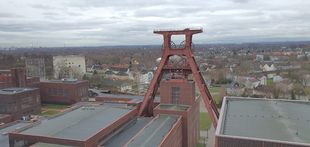

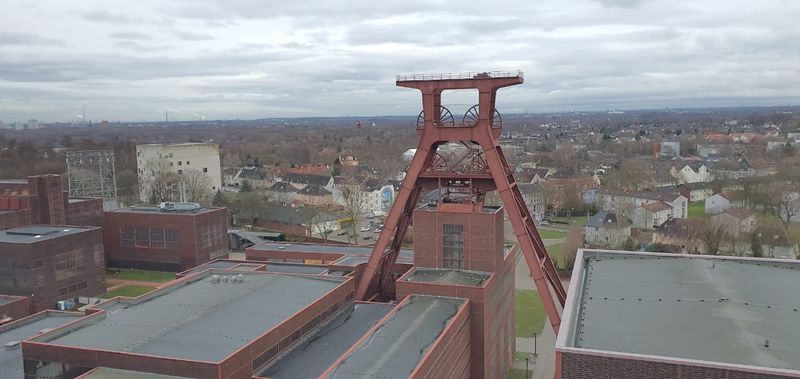
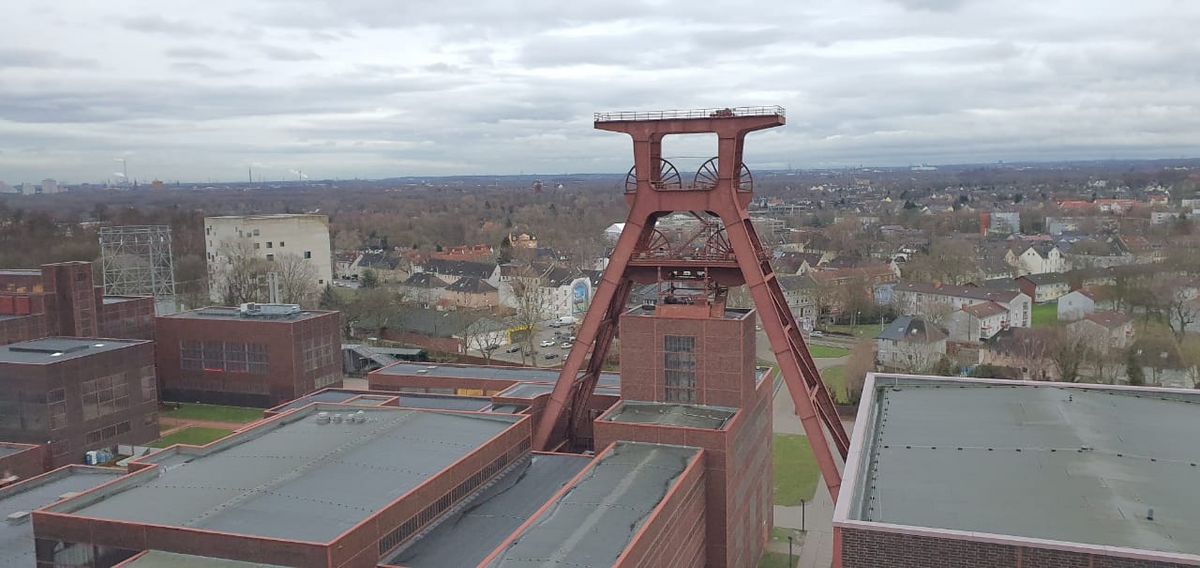
THE RUHR VALLEY IN THE INDUSTRIAL REVOLUTION AND THE CREATION OF THE ZOLLVEREIN COMPLEX
The Industrial Revolution in Germany began later than in Great Britain and France; Its take-off took place between 1830 and 1865.
During the 19th century, the Industrial Revolution transformed the various localities of the Ruhr Valley region, which until then had been only small villages. Coal, iron and steel, locomotives and railways, the chemical and energy industries constituted the economic pillar of the Ruhr mining and metallurgical industry.




The Zeche Zollverein coal mine was one of the largest and most modern coal extraction facilities in the world and is a symbol of the development of the industry in Europe. Today, the site is the main cultural center in the Ruhr region and also houses a museum that keeps alive the history of mining and the development of industrial architecture. The complex also houses exhibitions on paleontology and natural science, mineralogy, wars, the history of the Ruhr Valley and many other attractions.




COAL PRODUCTION IN THE RUHR VALLEY AND THE ZOLLVEREIN MINE
No other region of Germany has been the scene of such strong industrialization as the Ruhr Valley. In a few decades, a landscape of swamps metamorphosed into a gigantic industrial production space, where seven billion tons of coal were extracted, until the crisis in the mining sector.
The region went through two world wars, an economic miracle and the Cold War, being a source of raw material for the production of steel for automobiles and for the war industry. With the presence of thousands of workers, immigrant towns and workers' towns developed around the industrial zones. In 1956, almost half a million people worked in the mining industry in the Ruhr Valley.
Due to oil and gas competition in the energy market, coal mining in the Ruhr Valley experienced a major downturn from the early 1960s. In 1964 alone, 13 mines were closed in Essen, the number of miners decreased from 54,413 (1958) to 9,771 (1978).
The Zollverein mine operated until 1986, producing about 240 million tons of coal. To reach this remarkable mark, mining was carried out by the Longwall method and was operated by more than 8 thousand miners day and night in extreme conditions.
THE CLOSURE OF THE ZECHE ZOLLVEREIN MINE
The Zollverein Mine Closure involved a major decommissioning effort of machinery and equipment. One of the main challenges of the mine closure involved the drainage plan for the area and the expansion of the pumping stations.
In Zollverein, the future use of the space was widely discussed with society, which decided to list and conserve the site in order to maintain the facilities that document the production process, how the miners worked and lived.
THE LISTING AND CONSTRUCTION OF THE POST-INDUSTRIAL ARCHITECTURAL COMPLEX
The Stiftung Zollverein Foundation, established in 1998, began to pursue conservationand a new purpose for the industrial monument. To receive visitors, it was necessary to ensure the security of the place, a difficult job, given the vast area of the complex (equivalent to 100 soccer fields). For this, renowned architects were responsible for the restoration process.
Inscribed on the UNESCO World Heritage list since 2001, the site is the main cultural center in the Ruhr Region and also a museum that keeps alive the history of mining and the development of industrial architecture.
Harmonically composed according to the principles of symmetry and geometry, with red brick facadesin Fachwerk-style steel structures, the building has a high aesthetic level.




On the route of the Zollverein monument, the modernity of the 1920s and 1930s, the development of heavy industry and the processing of coal can be seen on gigantic machines and conveyor belts, endless rows of furnaces and six impressive chimneys.




At the entrance, a model of the Minas Gerais complex is completely dedicated to the visually impaired public, with explanations in Braille. Just ahead, the visitor is taken up a long escalator in the Ruhr Museum. The escalator runs along the diagonal axis outside the structure and transports visitors to the upper floor of the fascinating regional museum.
Along the route with photos and period films, the museum presents who the miners were, what their clothes were, tools and what it was like to work for hours at a time without seeing sunlight.




Among the tools on display, there is a hammer, used to break the coal walls, and which weighed about 15 kilograms. There are also many others that draw attention for their size.




In addition to the industrial artifacts of the mine, it is also possible to appreciate examples of geology, paleontology, mineralogy and archeology.


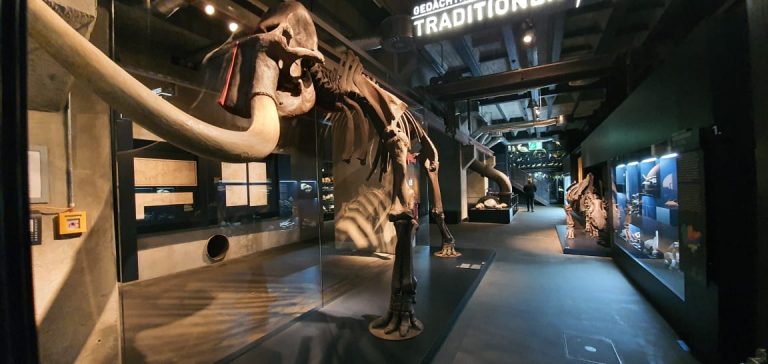









In addition, the Red Dot Design Museum, housed in the mine, has the largest collection of contemporary design in the world and has also become part of the world heritage site. Every year, the renowned Red Dot Award is given here for outstanding design achievements.
During the winter, Zeche Zollverein offers a skating rink for all ages and experience levels. At the rink, it is possible to skate for 150 meters between the large towers and the gigantic rust-red tubes, part of the coal processing structure.
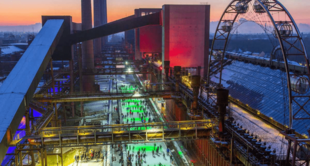
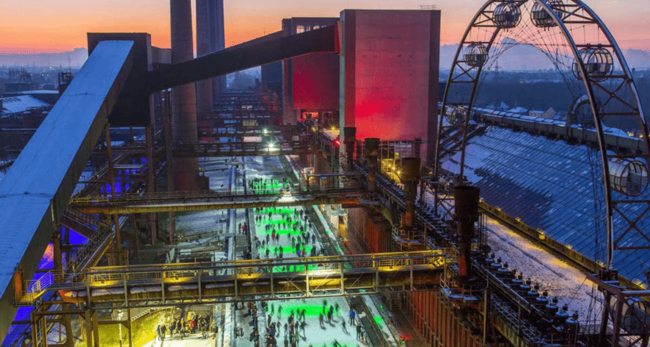
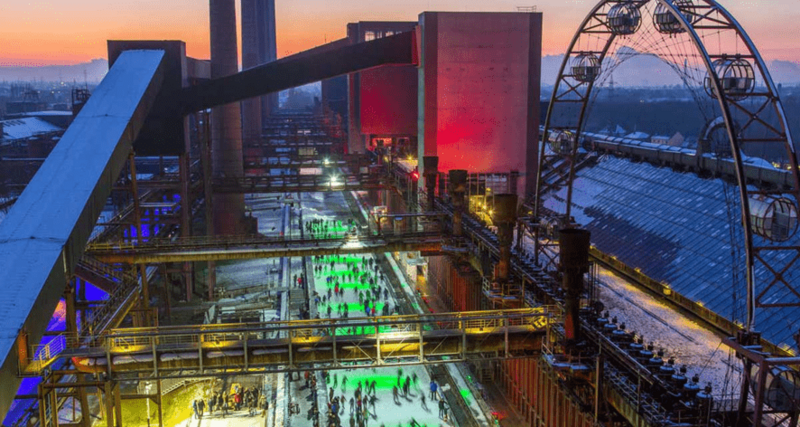
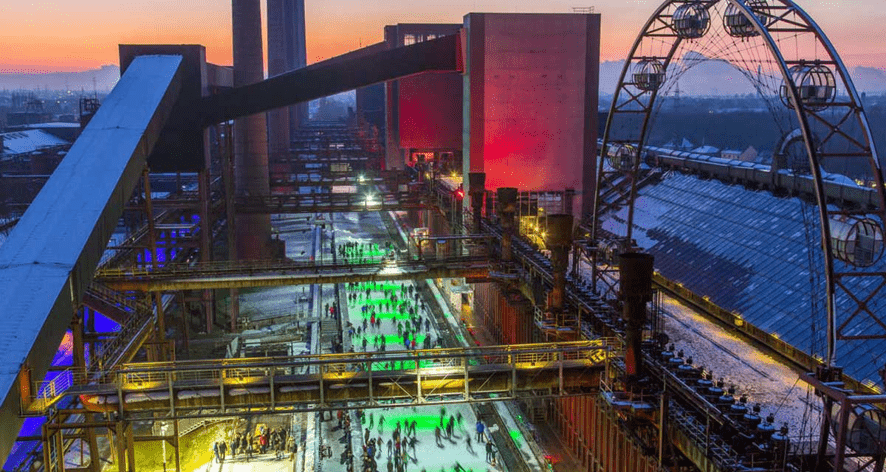
FESTIVALS AND CULTURAL PROGRAMS AT ZECHE ZOLLVEREIN
In addition to the brilliant modernist architecture, the Zollverein industrial complex is also a space to host large parties. In recent years, the space has been the stage for an alternative culture by receiving several names in electronic music, reinvigorating an energy previously dormant inside and outside the concrete corridors of the space.
Kokerei Zollverein's Mischanlage, which is an internal space of the complex and the former coal processing point, is one of the most exclusive spaces on the site. With several floors of concrete atriums and long dark corridors,it can be illuminated creating different environments. During the operation of the mine, it was a center of professional life for the mining community. Today, in addition to occasional parties, the space organizes an annual exhibition on the region's mining heritage called "The Age of Coal".
Despite the attractions, preservation and protection remain the priority within the cultural complex. At events, organizers must bear expensive safety measures, decoration, and spatial limitations, as well as lengthy organizational protocols.
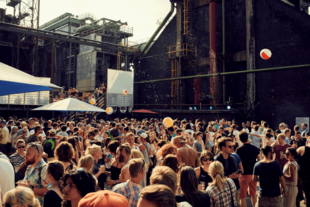


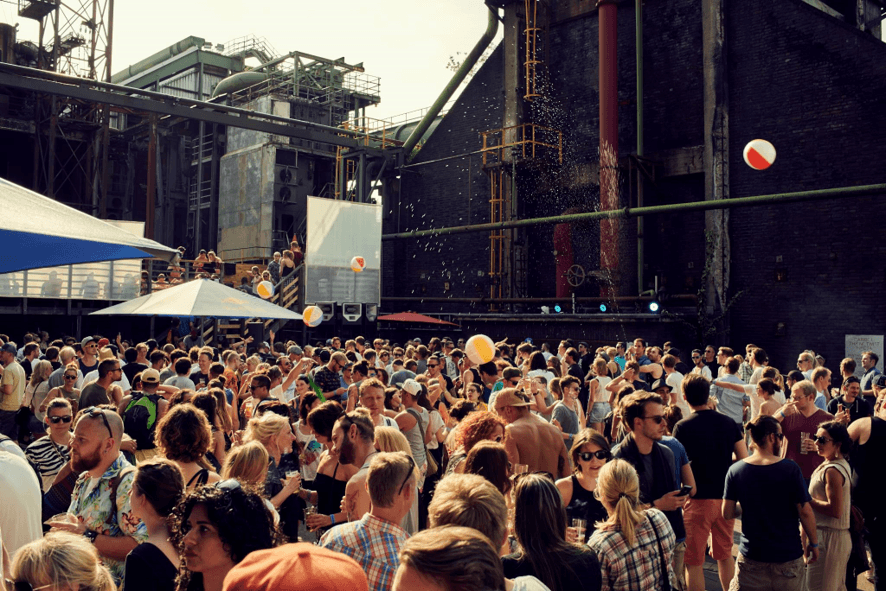
It is in this nostalgic atmosphere, which mixes the melancholy of the black tone of coal and the darkness of the underground, that Germany rekindles the lights of history, recognizing the importance of the region for its development and the economic pillar of an era in which the legacy synergistically composes the mixture of past and now.
The mining methods, production processes and machinery and equipment decommissioning efforts involved in the closure of the Zollverein Mine Complex can be found in our article "The Zeche Zollverein Mine and the Start of Ruhr Valley Mining in Germany".
